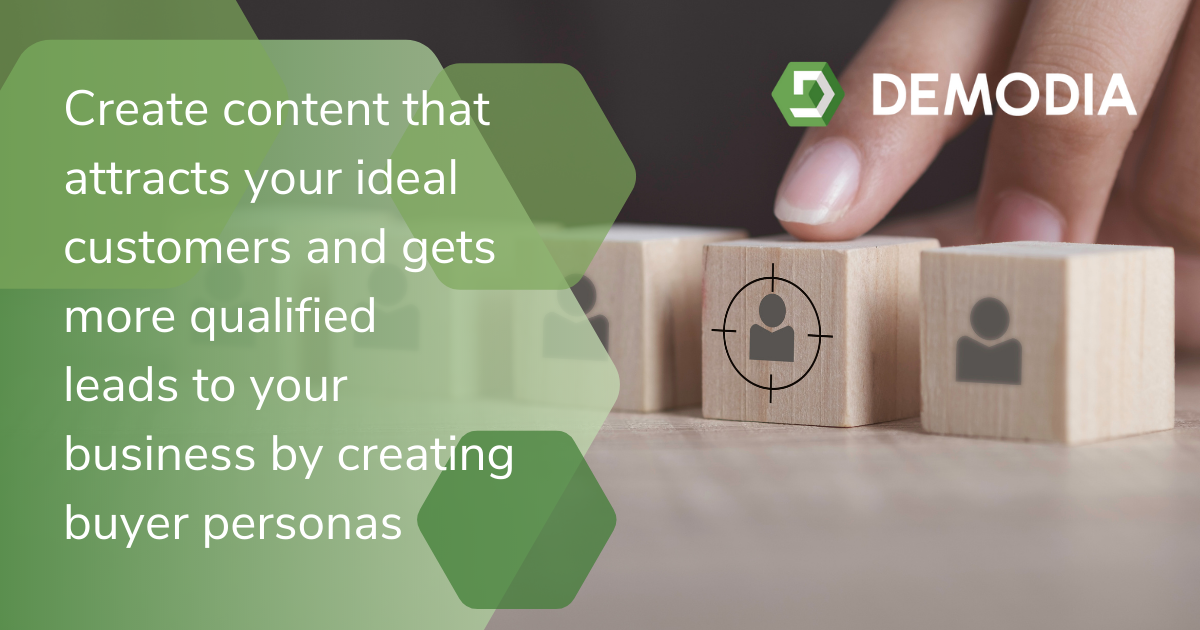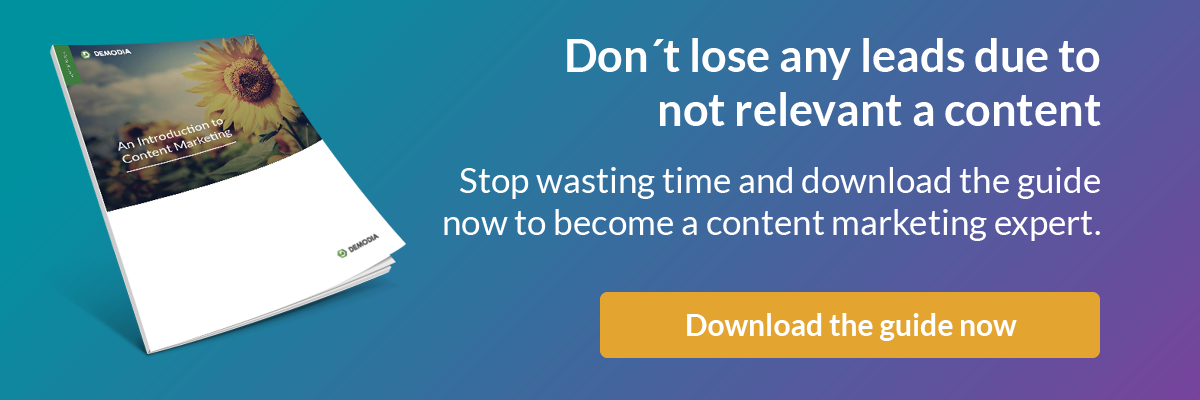Why buyer personas important and how do you make one

Trying to get more leads and customers is the goal of any business, but it’s a lot harder to accomplish this. With so many different types of customers with individual tastes and expectations, trying to appeal to all of them can feel overwhelming and beyond the capabilities of any marketer. The good news is, you don’t have to - you just have to appeal to your most ideal kinds of customers - but how do you find out who they are?
Buyer personas are the key to finding out who your ideal customers are and what they want. You can then use this information to create content that attracts them to your business. In this blog, we’ll show you how why buyer personas are so important and how you can create your own to find success with your digital marketing.
What is a buyer persona?
Buyer personas are created to demonstrate the collective traits of your ideal customer. It is a semi-fictional representation of their objectives, wants, needs and fears. You find these insights based on market research, actual data drawn from your existing customers, and some educated guesses. The point of a buyer persona is to understand and relate to the audience you want to advertise your products and services to.
The importance of a buyer persona
Buyer personas are at the heart of any marketing strategy and are found throughout any inbound marketing strategy. Their purpose is to give you an idea of what your potential customers respond to and what motivates them. With this information, you can appeal to your customers more effectively through messaging that hits on these elements. Without such knowledge, you won’t be able to engage with your customers and lose their trust and interest.
While buyer personas allow you to focus on your customers' challenges and pain points, they also provide you with specific ways of streamlining the right content for the right people.
This knowledge means that you can provide your customers with solutions to their problems in a way they relate to. Without buyer personas, we wouldn't know what content to create or how to reach customers effectively. Thus, buyer personas provide narrative context to all of your marketing messaging.
How do you create a buyer persona?
Doing the research
The first thing to note is that a buyer persona takes time and patience to create. To construct your ideal buyer persona, you need to define yourself and your business - this way, you’ll get a greater understanding of who will be interested in your business offering.
Questions such as:
- What problem does my business solve?
- How do we solve it?
- Who are my current customers, and who may also have similar problems?
- Why would someone choose to use our business?
With the above information, you can start determining what kind of buyer persona you will be creating.
Identifying your customers’ location and the information they need
Simply knowing who your customers are won’t help you find them and appeal to them. You have to know more details about them to engage with them and discover greater insights.
You can use the below questions to expand upon your personas and help you target them to a greater degree.
- What do your customers do?
- What industry are they in, and how long have they been in that industry?
- What is their job title?
- What are their business objectives?
- What are their qualifications?
- Where do they live?
- What are the challenges they face daily?
- What triggers them to look for solutions to their challenges?
- What questions do they ask the sales team during the sales process?
The above questions will help you find the locations to find your ideal customer and the general information you need to provide them with.
Discovering how to engage with your customers
However, you also need to understand your customers as people for full effect. Using the right tone, references and style will go a long way toward building a relationship of familiarity and trust with potential customers.
By answering the following questions, you can inform your buyer personas with the kind of insight that will give your messaging a relatable and engaging feel.
- What activities do your customers like to pursue?
- How old are they?
- Why do they work in their industry?
- What are their aspirations and motives?
- What would they change about their work or their industry?
- What are they reading?
- Where do they go for industry news?
When planning out buyer personas, remember to involve different team members. Think about who you need to include in this process and how they will add value - your sales team will have a lot of insight into who you should be selling to, but your support team will understand the roadblocks they typically face. For larger accounts, account managers are also a potential resource for you to utilise.
Creating the personas
Once you have these guiding questions and processes in place, there are four steps to follow when creating your buyer persona:

 STEP ONE
STEP ONE
Do thorough audience research
This is the time to dig deep. If you’ve followed along to this point, you’ll already have a good idea of who your audience currently is. However, you may need more guidance on how to attain this information.
The best way to compile this data is through your social media analytics, your customer database, and Google analytics to narrow details like age, location, language, spending power, interests, and challenges. For B2B, this will also help you establish the size of businesses and who makes purchase decisions.
Additionally, it would be good to establish what social channels your audience uses and scope out who your competitors are targeting. This will help you understand where to position your marketing communications and indicate the type of person you’re targeting.
 STEP TWO
STEP TWO
Identify customer goals and pain points
Your audience’s goal may be personal or professional, depending on the products and services you sell. It’s your job to figure out what motivates them and how you can help achieve their motivations.
On the flip side, you have their pain points. What problems are your customers trying to solve using your products and services? What is holding them back from success? What barriers do they face in reaching their goals? What are their goals?
This is where your sales team comes in. They are integral in finding answers to these questions. Another key option is engaging in social listening and social media sentiment analysis. Set up streams to monitor mentions of your brand, products, services, and competitors to give you a real-time look into what people are saying about you online. This is where you learn why people love your products and services or which parts of the customer experience aren't working.
 STEP THREE
STEP THREE
Understand where you come in
Now that you have a grasp on your customer’s goals and struggles, it’s time to identify how you can help. Think beyond the features, and analyse the true benefits of your products and services for your customers.
Consider your audience’s main purchasing barriers at each stage in their buying journey. From here, you can identify how your product or service helps resolve these barriers. Try to relate each aspect with the customer personas you have already constructed.
You should then be able to match your customer pain points and objectives with the service or products you offer as a solution. If you cannot do this, it may mean that your product or service is not the best fit for the particular customers you are scoping. If this happens, consider reevaluating your customer personas or taking a harder look at your product or service's value.
 STEP FOUR
STEP FOUR
Create your buyer persona
Once you have completed your research, try to look for common characteristics. As you bring these characteristics together, you will find a common thread that will give you a basis for your unique customer persona.
Give your buyer persona a name, job title, home, and other defining characteristics. This allows you to think of your future customer humanly, so they’re not just a collection of data points. As you flesh out your buyer persona, describe who they are now and who they want to be. This will help you establish how your products and services can help them get to their point of success.
Once these similar traits and patterns have been established, you will have an idea of your typical kind of customer who does business with you - in other words, you have a buyer persona.
Creating the personas
Creating marketing assets like buyer personas is not a small undertaking. The research required to find the common characteristics of your audience requires marketing technology and expertise that many businesses do not have. In addition, once you have your buyer personas in place, you need to begin converting them to begin generating value.
Finding the right agency partner to help boost your conversion rate is the first step toward this goal. It saves you time, money, and frustration while letting you find success without the need for in-house skills and know-how. We understand how important buyer personas are today, and how limited budgets can limit your understanding of how they work. As a small company ourselves, we’ve gone through this process, but found a way to succeed. That’s why we've spent the last 12 years planning and implementing award-winning integrated campaigns for B2B clients worldwide.
Contact us for a quick 30-minute meeting and we will present you with an integrated marketing campaign plan with the right messages, channels, audience, and content to use, to make success an assurance.
